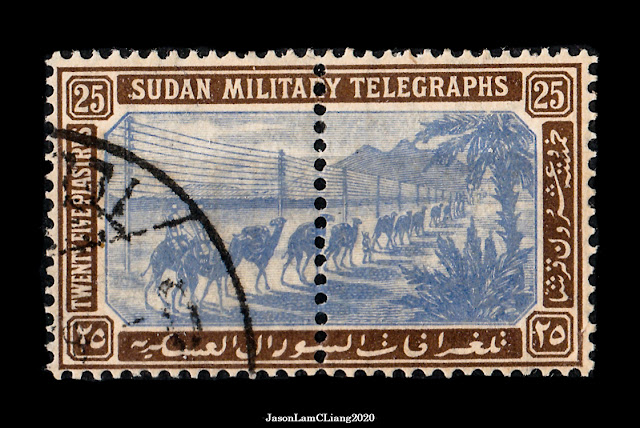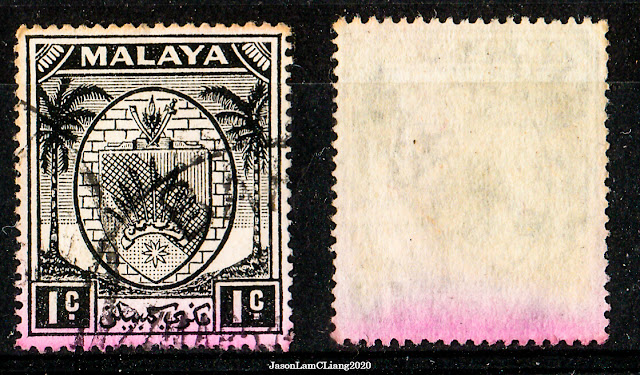Sudan Military Telegraph Stamps

The Camel Corps Military Telegraph stamps were released in 1898 for telegraphic purposes until 1901 between towns in Sudan. On the stamp is the Camel Corps of the Sudan Defence Force marching through the desert with telegraph lines depicted in the background. The Camel Corps was established by the Egyptian army in 1883; it was then reformed again in 1884 for the Gordon Relief Expedition. For this issue, telegraph stamps were bisected in the middle with a central perforation for the ease of separating the telegraph and its receipt. Not an error, rather for convenience. When separated, sender would receive the telegraph receipt with half portion of the stamp affixed while the post office keeps the other half attached to the telegraph form. It is an interesting find because it is very creative considering that the top half of telegraph forms used then was the receipt. Some time ago I came across just that example commented by Dave on Stampboards in 2019, which provided a visual explanat





